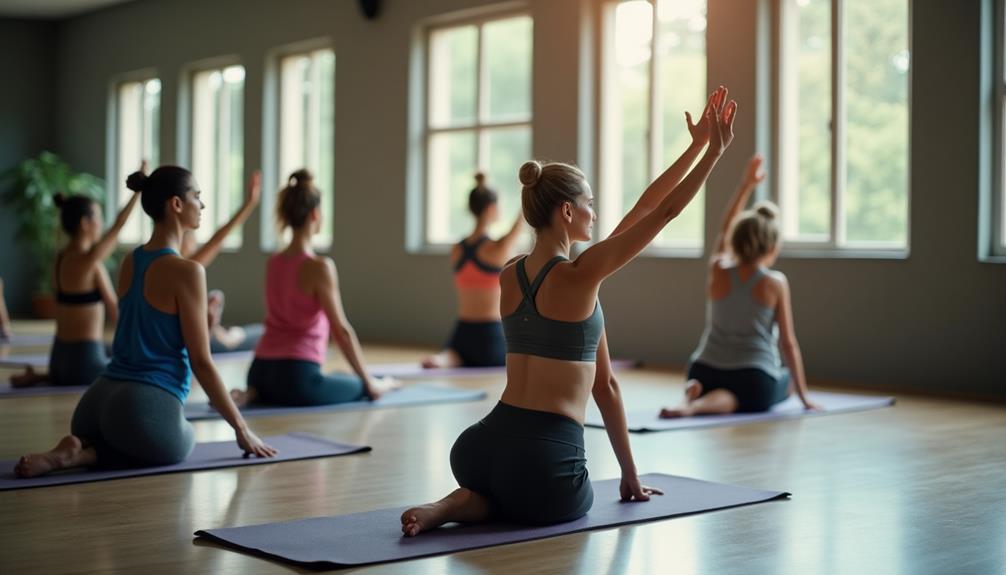To boost your recovery after a workout, try these 10 essential stretches. Start with the Standing Quadriceps Stretch to relieve tightness in your quads. Follow this with the Seated Hamstring Stretch for flexibility. Incorporate Child's Pose and Cat-Cow Stretch to relax your back. Pigeon Pose opens up your hips, while Standing Forward Bend helps ease tension. Don't forget the Figure Four Stretch for your glutes, the Wall Shoulder Stretch for upper body relief, and finish with the Butterfly Stretch for your inner thighs. These movements can enhance recovery and performance, helping you bounce back for your next session. Explore these benefits further.
Core Insights
- Incorporate the Standing Quadriceps Stretch to enhance flexibility and relieve tension in the thighs post-exercise.
- Use the Seated Hamstring Stretch to target tight hamstrings and promote overall leg recovery.
- Engage in Child's Pose to relax the back and hips while focusing on deep breathing for stress relief.
- Perform the Cobra Stretch to open up the chest and spine, aiding in flexibility and recovery after workouts.
- Include the Figure Four Stretch to improve hip and glute flexibility, addressing soreness from intense physical activity.
Standing Quadriceps Stretch
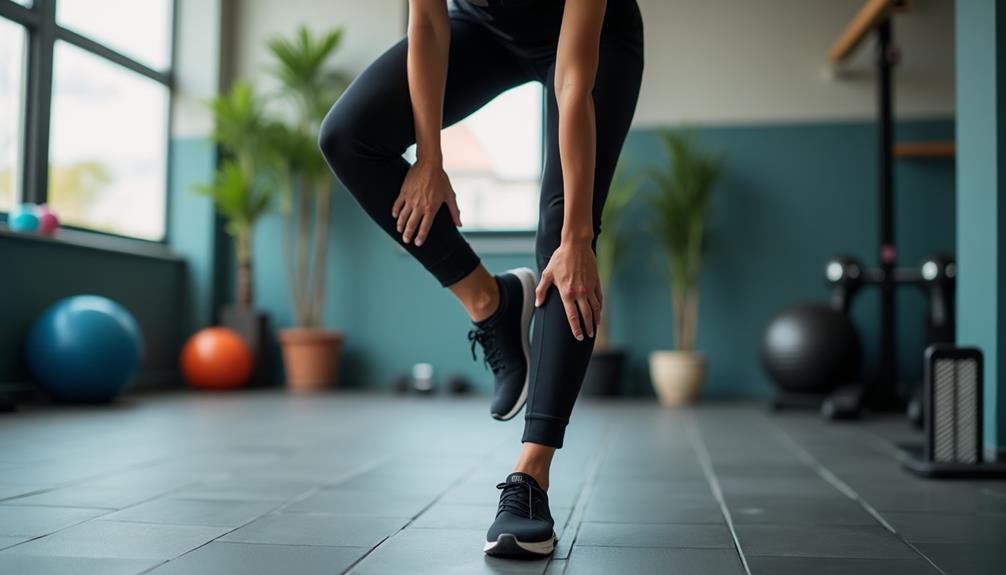
The standing quadriceps stretch is a fantastic way to relieve tightness in the front of your thighs after a workout. Start by standing tall with your feet hip-width apart. Shift your weight to your left foot and bend your right knee, bringing your heel toward your glutes. Reach back with your right hand to grasp your ankle. Keep your knees close together and your hips pushed forward for a deeper stretch. For an enhanced experience, consider using massage balls to target specific muscle groups before or after this stretch. The firmness and size of the massage ball can be chosen based on your preferences and needs. Hold the position for about 15-30 seconds, breathing deeply. Switch sides and repeat. This stretch not only improves flexibility but also helps prevent injuries by promoting muscle recovery. Incorporating it into your routine can enhance your overall performance and comfort in future workouts.
Seated Hamstring Stretch
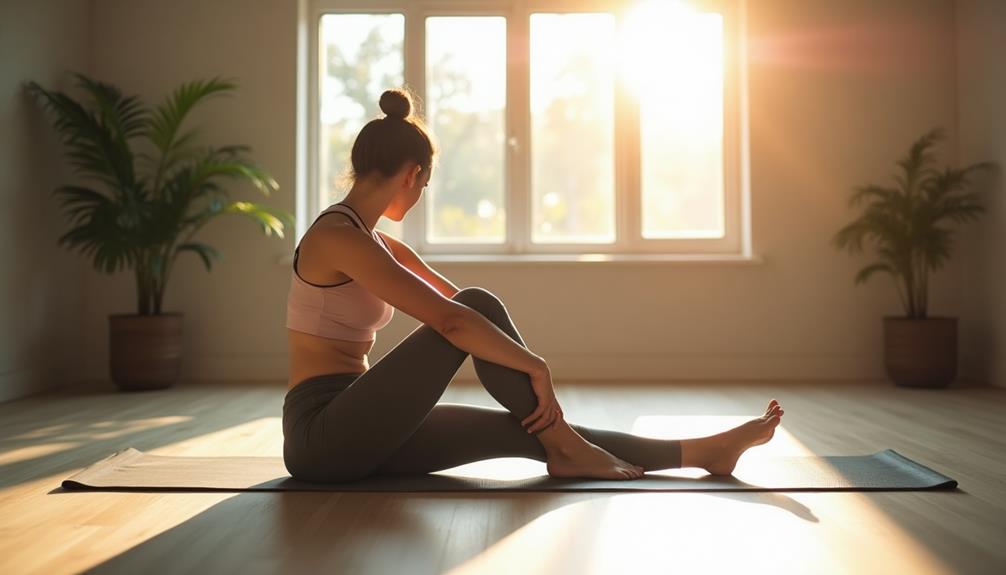
How to Perform the Stretch:
- Sit on the floor with your legs straight in front of you.
- Flex your feet, keeping your toes pointing upward.
- Inhale deeply, then as you exhale, hinge at your hips and reach forward toward your toes.
- Keep your back straight and avoid rounding your spine.
- Hold this position for 20 to 30 seconds, breathing deeply.
- Repeat the stretch two to three times.
For enhanced muscle recovery and flexibility, consider using a foam roller before or after this stretch. Foam rollers can help improve blood circulation and reduce muscle soreness, complementing your stretching routine.
Child's Pose
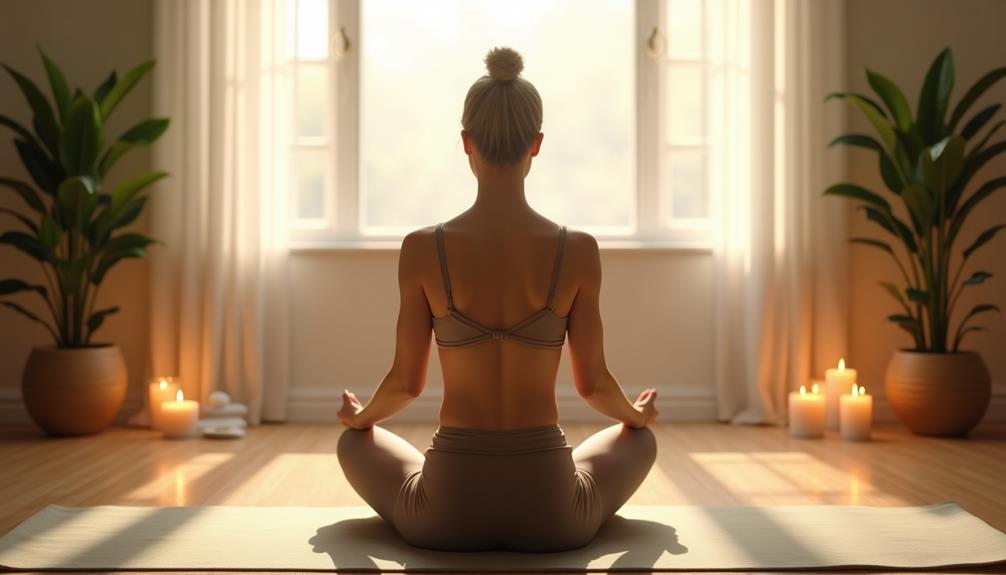
Breathe deeply, feeling the stretch in your back and hips. Hold this position for 30 seconds to a minute, focusing on your breath. You'll notice an increase in flexibility and a deeper sense of calm. Child's Pose is an excellent addition to your post-workout routine.
Cat-Cow Stretch
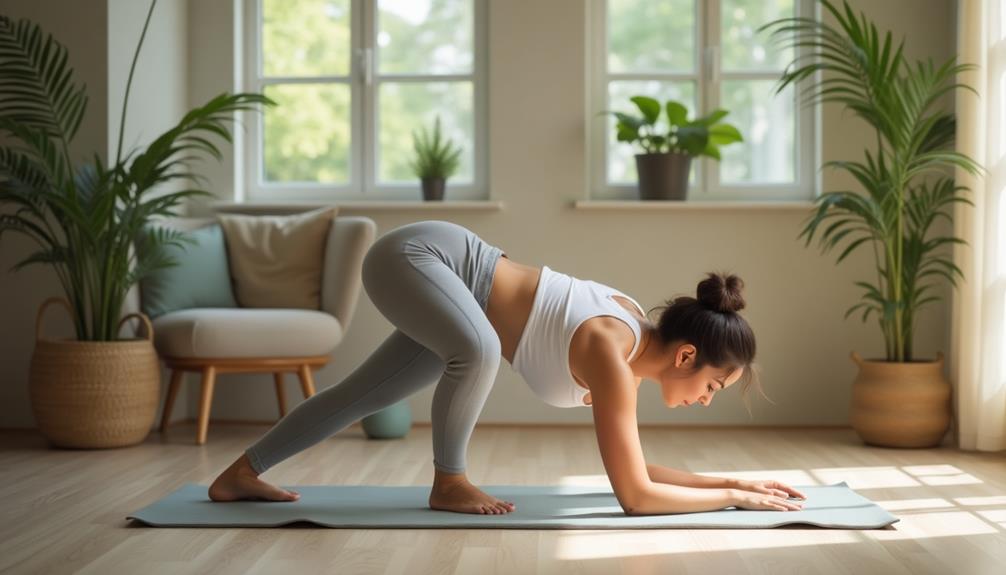
To perform the Cat-Cow Stretch:
- Start on all fours with your wrists under your shoulders and knees under your hips.
- Inhale, arching your back and lifting your head (Cow).
- Exhale, rounding your spine and tucking your chin (Cat).
| Movement | Benefits |
|---|---|
| Cat | Releases tension in the back |
| Cow | Boosts spinal flexibility |
| Both | Heightens breath awareness |
| Combined | Enhances overall posture |
Incorporating this stretch into your routine can enhance your recovery significantly.
Pigeon Pose
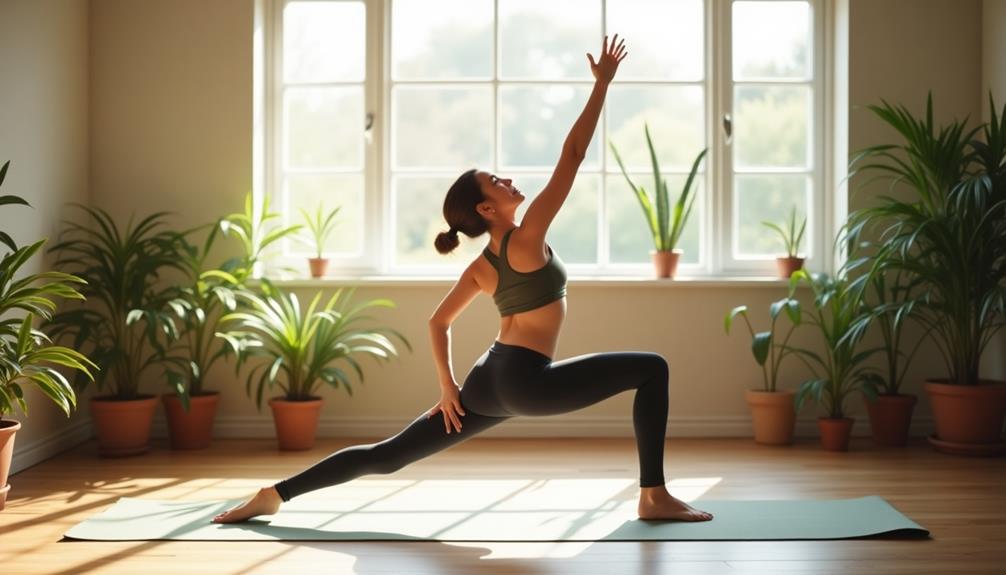
You can stay upright or fold forward, resting your forearms on the mat for a deeper stretch. For best results, consider using a compression sleeve on your legs during this stretch to promote better blood flow and reduce muscle fatigue. This can enhance the effectiveness of the Pigeon Pose in your post-workout routine. Hold this position for 30 seconds to a minute, breathing deeply to release tension. Return to the starting position and switch sides. This stretch not only enhances flexibility but also aids in recovery, helping you to feel more balanced and less tight after your workouts.
Cobra Stretch

Although it's often overlooked, the Cobra Stretch is a fantastic way to open up the chest and spine after a workout. This pose not only helps relieve tension but also enhances flexibility. Here's how to execute it effectively:
- Start Position: Lie face down on the mat, legs extended back, and palms under your shoulders.
- Lift Up: Press into your palms, straightening your arms while keeping your hips on the ground. Gently lift your chest.
- Hold the Stretch: Breathe deeply and hold this position for 15-30 seconds, feeling the stretch in your lower back and chest.
Incorporating the Cobra Stretch into your post-workout routine can boost recovery and help maintain a healthy spine.
Standing Forward Bend
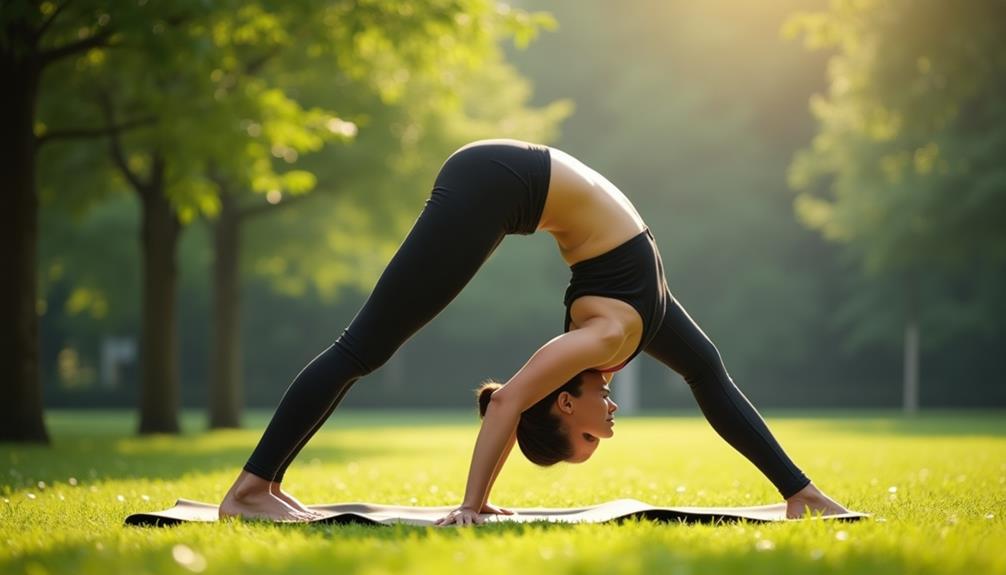
- Stand with your feet hip-width apart.
- Inhale and reach your arms overhead.
- Exhale as you hinge at the hips, folding forward.
- Let your head hang heavy while keeping a slight bend in your knees.
Benefits of Standing Forward Bend
| Benefits | How It Helps | Tips |
|---|---|---|
| Stretches hamstrings | Improves flexibility | Keep knees slightly bent |
| Relieves lower back tension | Reduces tightness | Don't force the stretch |
| Enhances blood flow | Aids recovery | Breathe deeply |
| Calms the mind | Promotes relaxation | Hold for 30 seconds to 1 minute |
Incorporate this stretch for a quicker recovery!
Figure Four Stretch
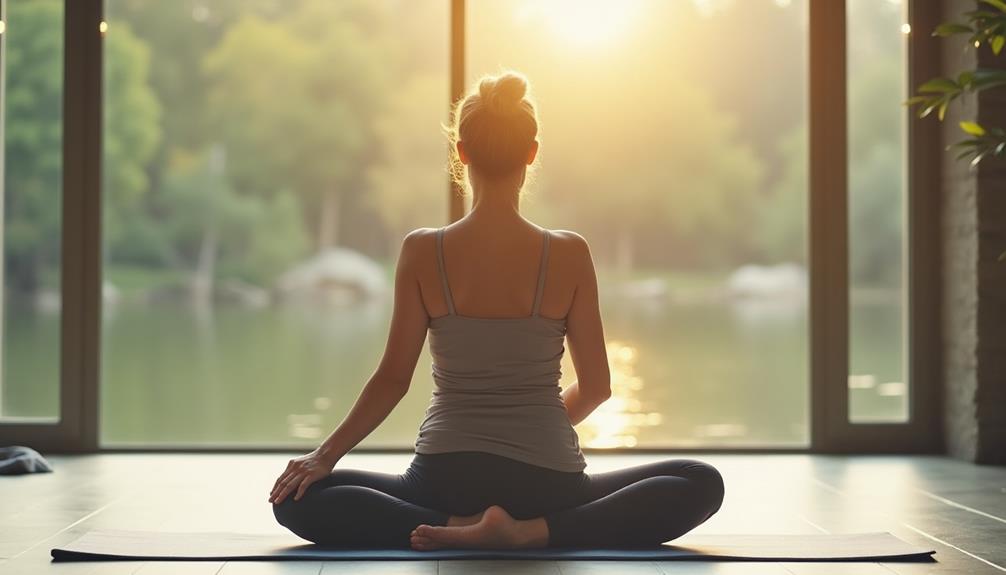
- Start Position: Lie on your back with your knees bent and feet flat on the floor.
- Cross Leg: Place your right ankle over your left knee, forming a figure four shape.
- Pull: Gently pull your left thigh towards your chest while keeping your head and shoulders relaxed.
Hold this stretch for 20 to 30 seconds, then switch sides. You'll feel a nice stretch in your hips and glutes, which can help ease soreness and improve flexibility. Incorporate this stretch into your routine for better recovery.
Wall Shoulder Stretch
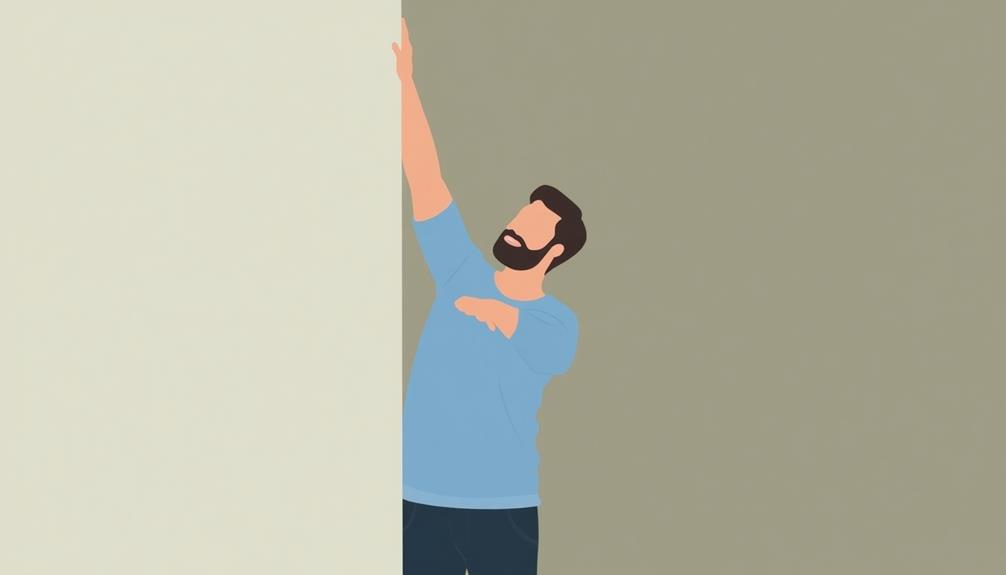
The Wall Shoulder Stretch is a fantastic way to release tension in your shoulders and upper back after a workout. Here's how to do it:
Step 1: Position Yourself
Stand facing a wall, about an arm's length away.
Step 2: Arm Placement
Extend one arm up and place your palm flat against the wall. Your elbow should be slightly bent.
Step 3: Lean In
Gently lean your body towards the wall, feeling the stretch across your shoulder and chest. Keep your back straight.
Step 4: Hold the Stretch
Maintain this position for 15-30 seconds. Breathe deeply to enhance relaxation.
Step 5: Switch Sides
Release and repeat on the opposite side. This stretch helps improve flexibility and provides relief after intense workouts.
Butterfly Stretch
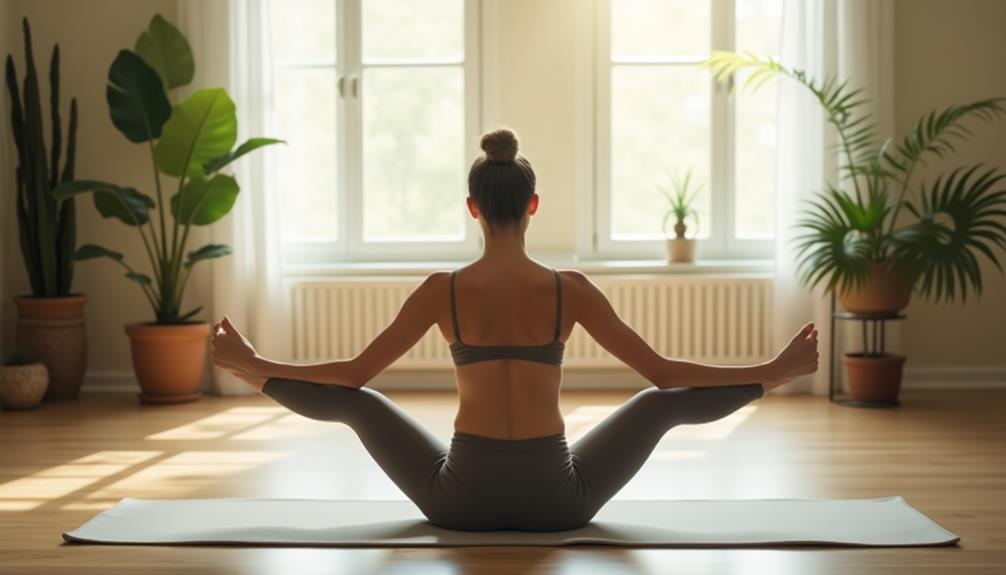
- Sit on the floor: Bring the soles of your feet together and let your knees fall outward.
- Hold your feet: Grasp your feet with both hands, keeping your back straight.
- Gently press down: Use your elbows to gently push your knees toward the floor for a deeper stretch.
Hold this position for 15-30 seconds, breathing deeply. You'll feel the stretch in your inner thighs and hips, aiding in recovery and improving your overall flexibility.
Frequently Asked Questions
How Long Should I Hold Each Stretch for Optimal Recovery?
You should hold each stretch for about 15 to 30 seconds. This duration allows your muscles to relax and lengthen, promoting flexibility and aiding your recovery. Don't forget to breathe deeply during each stretch!
Can I Stretch if I Experience Muscle Soreness?
Yes, you can stretch if you're experiencing muscle soreness. Gentle stretching helps increase blood flow and flexibility. Just listen to your body—don't push too hard, and focus on relieving tension rather than forcing movements.
Should I Warm up Before Stretching Post-Workout?
You might think stretching's fine after a workout, but warming up first can enhance flexibility and prevent injury. So, take a few minutes to gradually increase your heart rate before diving into those stretches.
Are There Any Stretches to Avoid After Intense Workouts?
You should avoid deep static stretches immediately after intense workouts. These can lead to muscle strain or injury. Instead, focus on gentle movements that maintain flexibility without overstressing your muscles during recovery.
How Often Should I Incorporate Stretching Into My Routine?
Did you know that 80% of people experience muscle tightness? To combat this, incorporate stretching into your routine at least three to four times a week. It'll enhance flexibility and help prevent injuries effectively.

